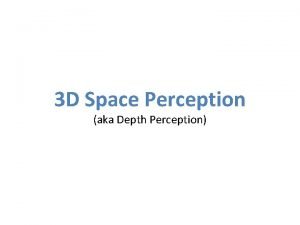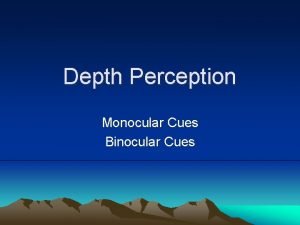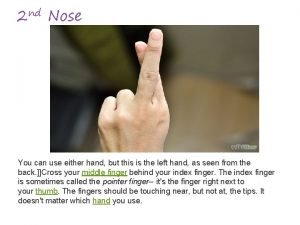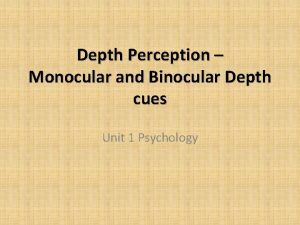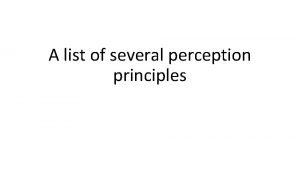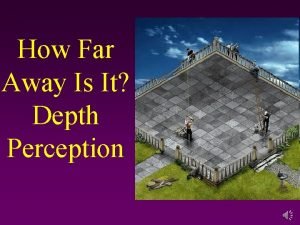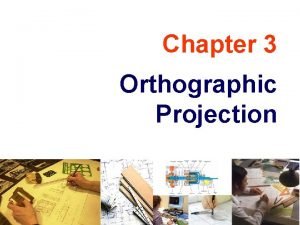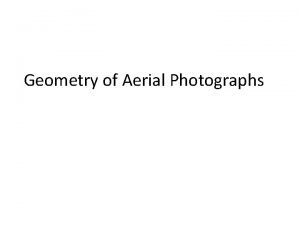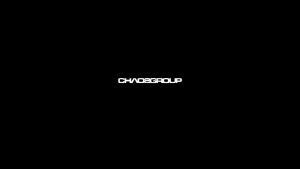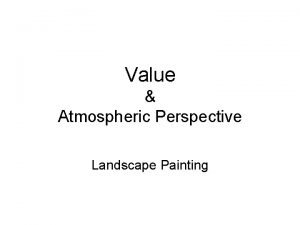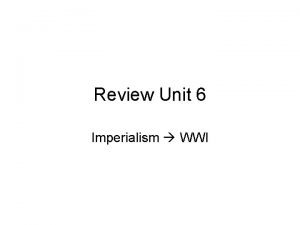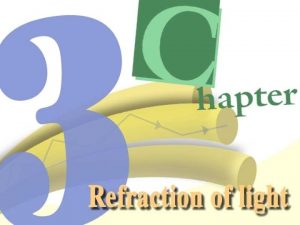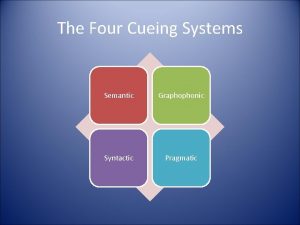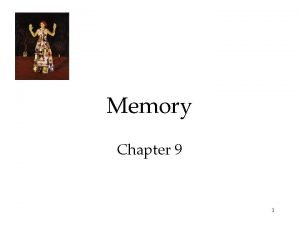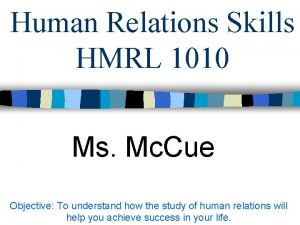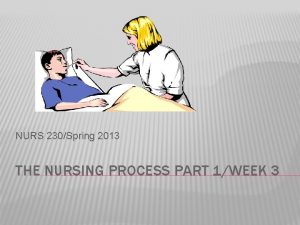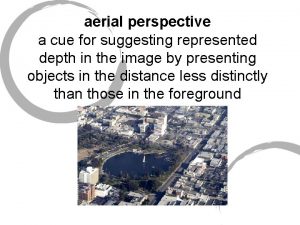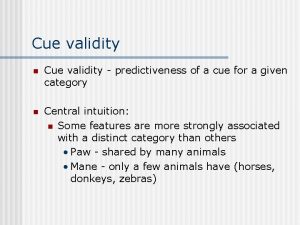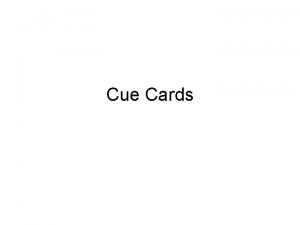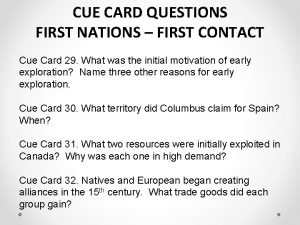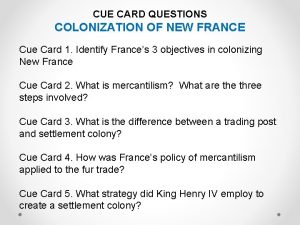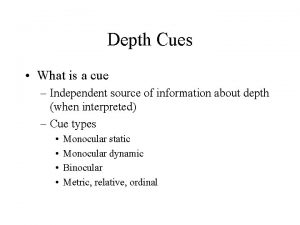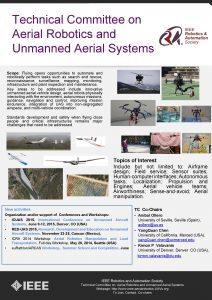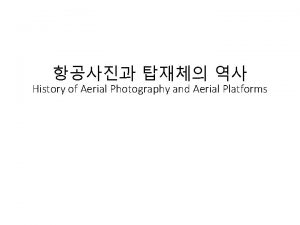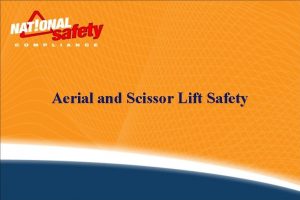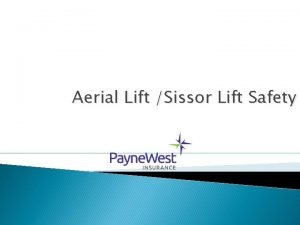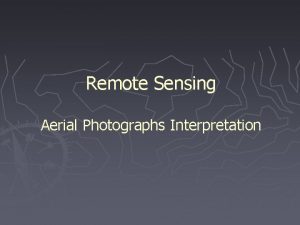aerial perspective a cue for suggesting represented depth






















- Slides: 22

aerial perspective a cue for suggesting represented depth in the image by presenting objects in the distance less distinctly than those in the foreground

axis of action In the continuity editing system, the imaginary line that passes from side to side through a main actors, defining the spatial relations of all the elements of the scene as being to the right or the left. It is also called the 180 -degree line. When the camera crosses this axis at a cut, those spatial relations are reversed thereby confusing the audience. It is one of cardinal rules of continuity editing not to cross this axis during a sequence.

backlighting cast onto the figures from the side opposite the camera. It creates a thin outline of light on the figures' edge.

camera angle the position of the frame in relation to the subject it shows. A high angle is when camera is looking down, low angle when looking up. camera movement onscreen impression that the framing is changing with respect to the scene being photographed. This is usually achieved by actual movement of camera but also by a zoom lens or special effects.

canted framing a view in which the frame is not level. Either right or left side is lower, causing objects in the scene to appear tipped.

cinematography a general term for all the manipulations of the film strip by the camera in the shooting phase and by the laboratory in the development phase.

Cinéma vérité a cinema that utilized lightweight equipment, two-person crews (camera and sound), and interview techniques. It is also now often used loosely to refer to any kind of documentary technique. See direct cinema.

close-up a framing in which the scale of the object shown is relatively large, most commonly a person's head seen from the neck up, or an object of a comparable size that fills most of the screen.

contrast in the cinematography, the difference between the brightest and the darkest areas within the frame

crane shot a shot with a change in framing accomplished by having the camera on the crane and moving through the air in any direction.

deep focus a use of the camera lens and lighting that keeps both the close and distant planes being photographed in sharp focus.

deep space an arrangement of mise-en-scene element so that there is a considerable distance between the plane closest to the camera and the one farthest away. Any or all of these planes may be in focus.

depth of field the measurements of the closest and farthest planes in front of camera lens between which everything will be in sharp focus. For example, a depth of field from 5 to 16 feet would mean everything closer than 5 feet and farther than 16 ft would be out of focus.

distance of framing the apparent distance of the frame from the mise -en-scene elements. Also called "camera distance" and "shot scale". Close-up and medium long shot are examples of terms referring to distance of framing.

dolly a camera support with wheels, used in making tracking shots.

establishing shot a shot, usually involving a distant framing, that shows the spatial relations among the important figures, objects, and setting in a scene.

exposure a measure of the amount of light striking the surface of the film. Overexposed film gives a very light, washed out, dreamy quality to the print image while underexposed makes the image darker, muddy, and foreboding.

extreme close-up a framing in which the scale of object is very large; most commonly, a small object or a part of the body. Also called detail shot

extreme long shot a framing in which the scale of the object shown is very small; a panoramic view of an exterior location photographed from a considerable distance, often as far as a quarter-mile away.

eyeline match a cut obeying the axis of action principle, in which the first shows a person looking off in one direction and the following shot shows a nearby space containing what he or she sees. If the person looks left, the following shot should imply that the looker is off screen right.

fast motion The film is shot at less than 24 frames per second so that when it is projected at normal speed, action appears to move much faster. (A slow motion is achieved when film is shot faster than 24 frames and projected at normal speed. ) Also called accelerated motion.

fill lighting from a source less bright than the key light, used to soften deep shadows and illuminate areas not covered by key light. Also called filler light. See three-point lighting.
 Paris, a rainy day
Paris, a rainy day Monocular cues texture gradient
Monocular cues texture gradient Constancy psychology
Constancy psychology Depth cues such as interposition and linear perspective
Depth cues such as interposition and linear perspective Monocular pictorial depth cues
Monocular pictorial depth cues Brightness constancy example
Brightness constancy example Monocular depth cues of interposition
Monocular depth cues of interposition View of an object represented by width and depth
View of an object represented by width and depth Geometry of aerial photography
Geometry of aerial photography Vray aerial perspective
Vray aerial perspective Landscape atmospheric perspective
Landscape atmospheric perspective 9.11 perspective shift
9.11 perspective shift This cartoon is suggesting that the league of nations would
This cartoon is suggesting that the league of nations would Critical angle of semi circular block
Critical angle of semi circular block Iescpe
Iescpe One point perspective lettering
One point perspective lettering Silo perspective vs business process perspective
Silo perspective vs business process perspective Syntactic clues definition
Syntactic clues definition Play better bridge
Play better bridge Retrieval cue
Retrieval cue How to write cue cards
How to write cue cards Textbook reconnaissance
Textbook reconnaissance The nursing process organizes your approach
The nursing process organizes your approach
